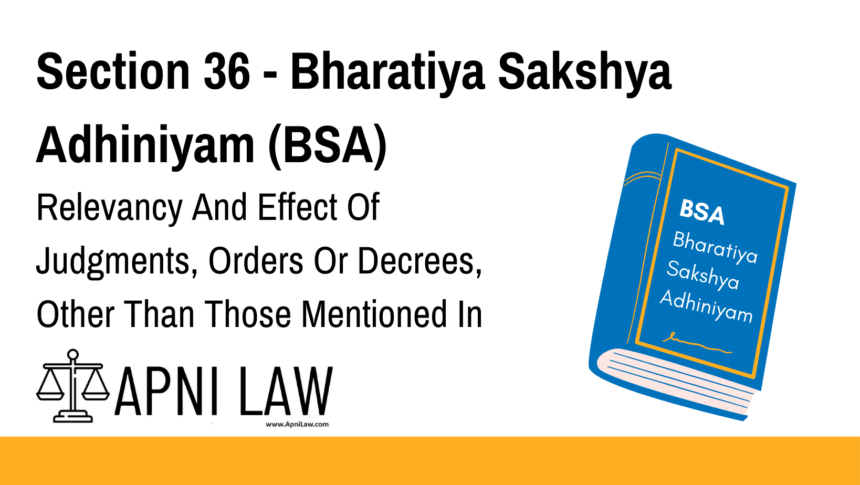Code
Judgments, orders or decrees other than those mentioned in section 35 are relevant
if they relate to matters of a public nature relevant to the enquiry; but such judgments,
orders or decrees are not conclusive proof of that which they state.
Illustration.
A sues B for trespass on his land. B alleges the existence of a public right of way over
the land, which A denies. The existence of a decree in favour of the defendant, in a suit by
A against C for a trespass on the same land, in which C alleged the existence of the same
right of way, is relevant, but it is not conclusive proof that the right of way exists.
Explanation
Section 36 of the Bharatiya Sakshya Adhiniyam (BSA) deals with the relevancy of judgments, orders, or decrees that are not “judgments in rem” (as defined in Section 35).
It applies to:
- Judgments involving public rights or matters of public nature.
- Cases that may have indirect bearing on the current legal enquiry.
Important distinction:
- These judgments are relevant and may be considered by the Court.
- However, they are not “conclusive proof” of what they declare or state.
Illustration Breakdown
Case: A sues B for trespass.
B argues that the land has a public right of way.
Relevance:
A past decree involving the same land, where a court ruled in favor of C (who also claimed public right of way), is relevant.
But:
That judgment isn’t conclusive proof of the existence of a public right of way in the current case between A and B.
Common Questions and Answers
1. What is the purpose of admitting such judgments?
To provide context or establish a pattern in disputes involving public rights.
2. Why are these judgments not conclusive?
Because they are not binding between different parties and may depend on different facts or arguments presented in separate cases.
3. Is a judgment about a public nuisance admissible under this section?
Yes, if it relates to a matter of public nature and is relevant to the inquiry — but it won’t be considered conclusive proof.








